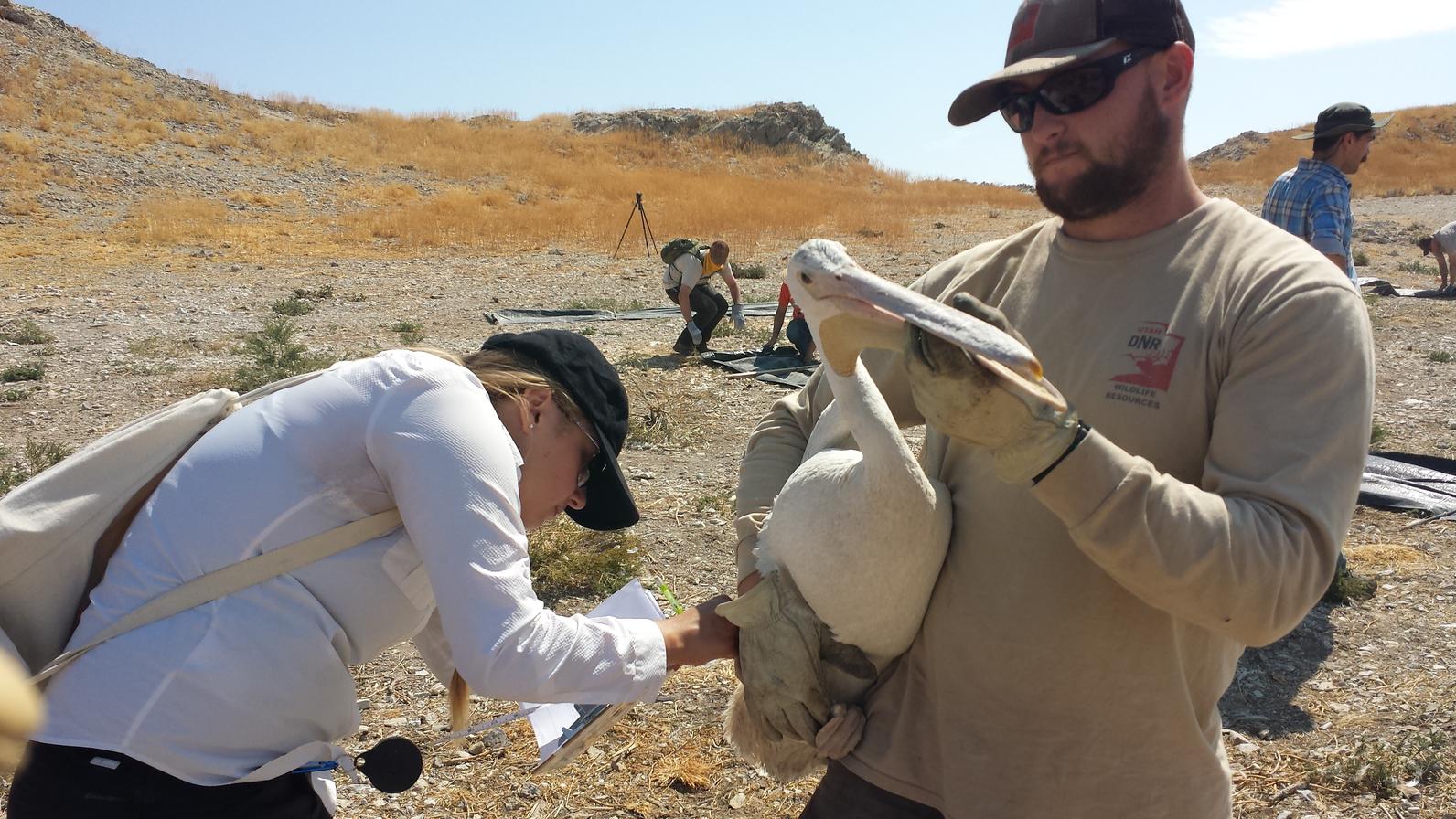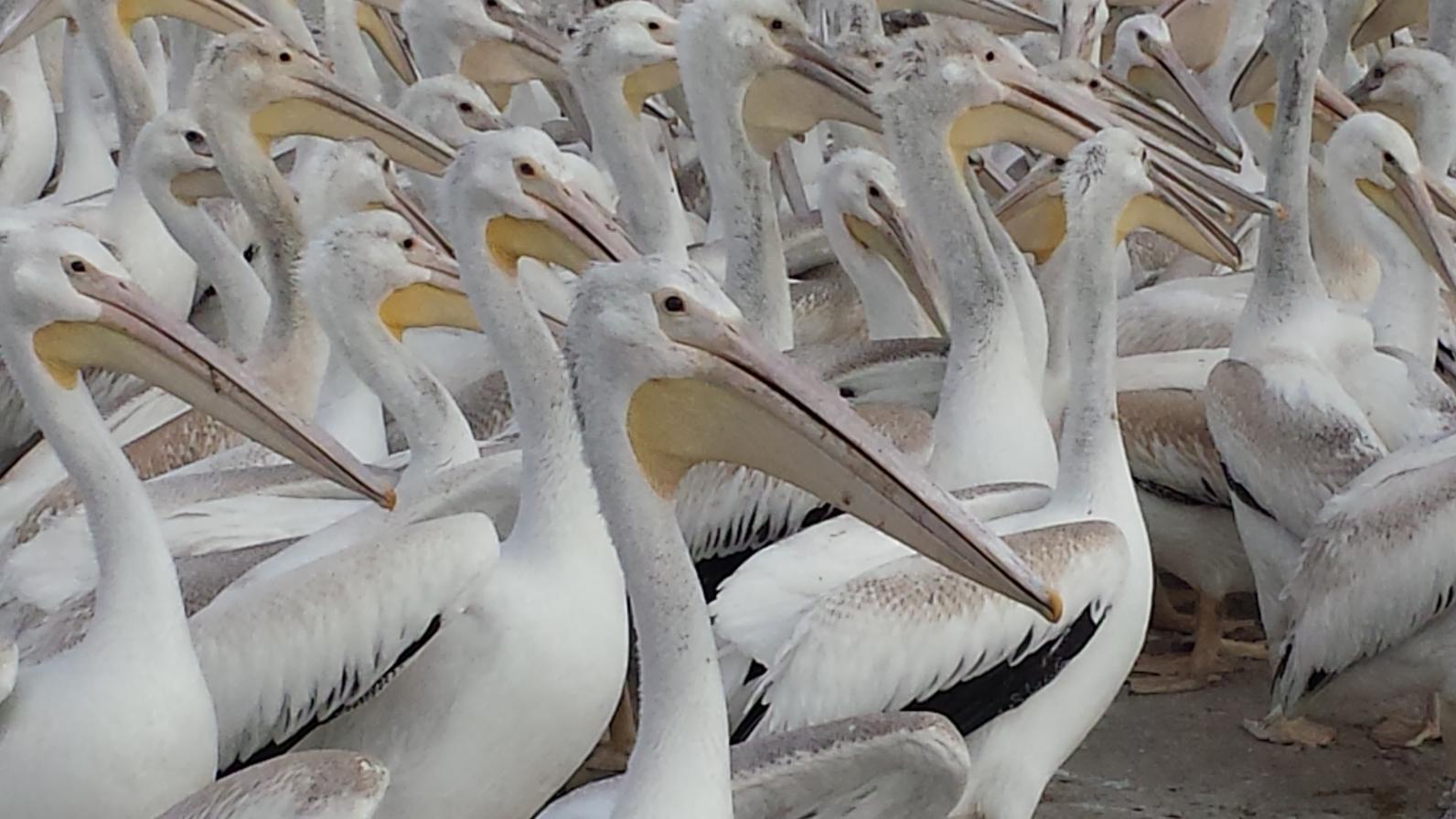
It was August 15th, the last of three attempts to travel to Gunnison Island to tag juvenile American White Pelicans (Pelecanus erythrorhynchus) before they fledged. Weather had shut us down previously, mostly from wind stirring up the dense hypersaline water of the north arm of Great Salt Lake. Many of us didn’t truly know what that meant until our return trip from Gunnison, when the boats rammed hard against oncoming briny fetches on a “good” weather day.
Each year, the Great Salt Lake Ecosystem Project (GSLEP) of Utah Division of Wildlife Resources (DWR) summons approximately 50 volunteers and staff to visit the pelican rookery, which is a designated State Wildlife Management Area, to tag and band 500 pelicans before they fledge. When lake levels are low, the island becomes accessible to predators, but higher water years such as this one, affords them refuge while they grow their first flight feathers and await freshly caught meals from adults that travel to and from freshwater wetlands and bays a minimum of 30 miles away.

This year, additional measurements and weights were taken of the birds as part of the “PELI” project of Westminster University’s Great Salt Lake Institute. Although the island is closed to non-authorized visitation, a series of cameras (PELIcams) have been deployed by the Institute in partnership with DWR and the University of Utah, and images are uploaded to their website (Great Salt Lake Institute PELIcam Project ) so we can learn more of the colony’s activities without disturbing them. Along with the GSLEP wing tags and leg bands, the intent of the digital records is to learn more about American White Pelican migration patterns, breeding behavior and survival rates on Gunnison Island relative to the effects of water diversion and climate change. DWR has also initiated a program that outfits individual pelicans with backpack transmitters to monitor migration patterns. Biologists hope to learn more of the ecology of these iconic birds and the importance of their long-time rookery at Great Salt Lake.
We successfully banded and tagged 500 pelicans on the 15th, which wasn’t necessarily a given, being so late in the season with so many birds already fledged. If you identify a pelican with tags and bands, please report the following information to reportband.gov or email johnneill@utah.gov: date, location, tag color and code with a photo. Researchers are counting on all of us to help collect this important information, as Gunnison Island is one of the largest rookeries of American White Pelicans in North America.
Heidi Hoven, PhD, is the assistant sanctuary manager for the Gillmor Audubon Sanctuary.
By Heidi Hoven
Monthly Giving
Our monthly giving program offers the peace of mind that you’re doing your part every day.




